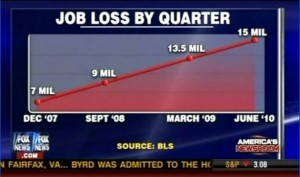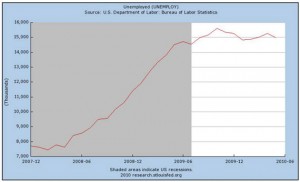In a previous column, we reviewed some reasons why some marketers give Agile the stink-eye. Let’s review why developers may be sending that stink-eye right back at ’em.
They’re annoyed – by short attention span theatre.
Marketing is all about the art of the possible. Brighter, shinier, cooler possibilities assail marketer’s brains constantly – it’s relentless. Those deep thoughts surface at inopportune times – like when their original, slightly less cool vision is in testing phase. Intellectually, they may know the enhancement should wait for the next sprint. But emotionally, this new cooler version becomes their vision of the finished project. So they become serial badgerers, imploring the PM and the developers to make “this one little change” here, “a small tweak” there. Hey marketers – a little discipline please. If you catch yourself uttering a sentence that begins with “keep it exactly the same, except….”, snap the elastic on your wrist and go back to your desk.
Sure, some marketers argue that Agile environments are supposed to welcome changing requirements. They do, in theory. The GOP welcomes healthy bipartisan debate in theory too. Theories are like that. Unlike the GOP, Agile doesn’t filibuster – it simply pushes the change to backlog. Or depending on the rank and title of the badgerer, stays late and does it, and harbors resentment.
They’re misunderstood – most marketers are clueless about sprint process.
Many marketers do actually think that if their request is not yet in production, they can still make changes, even if it’s 3 in the afternoon and the release is at 5:30. They’re not really trying to be jerks, they simply don’t know better. But they should. Responsible marketers, with the help of the project manager and/or scrum manager, learn the rhythms of the development organization that brings their ideas to life. When they do, they understand that recalcitrance isn’t the only reason behind a refusal to accept a change. But development teams take notice – once a marketer has taken the time to understand and honor your process, you’ll have to stick by your process too. No more blue smoke and mirrors.
They’re resentful – they’re the ones staying til 8:30 on Friday night.
Let’s just say it. Marketers have a reputation of not working very hard. Full disclosure, I’m in Marketing. That Dilbert cartoon with the sign that says “Marketing – 2 Drink Mininum” hangs on my wall. But trust me, most of us work our share of nights and weekends – usually individually instead of communally. Maybe because we’re not visibly toiling away night after night as a department, development teams can sometimes assume that they’re doing all the heavy lifting while Marketing lounges on divans eating bon bons while watching Oprah. That’s a myth. We only eat bon bons if the mailhouse vendor sends them at Christmas. And we only watch Oprah when we’re home sick. Some of us not even then.
They’re apprehensive – Marketing can declare all their work a failure.
A pet peeve of mine is when I’m in a meeting where someone justifies a decision with “well, I think users would want…” I just want to cut off that sentence with an air horn. Good marketers test. Good marketers declare success metrics for their initiatives, and Agile teams should abide by the same set of metrics. In my experience, when Agile teams reject Marketing’s analytics in favor of their own metrics, usually their own analytics tell them they don’t need to change their code. Objective, dispassionate measurement makes continuous improvement possible. It doesn’t matter if a developer missed his high school reunion to code the new product page, or the Angel Gabriel handed the style guide down from the sky to the CMO on an iPad. If Marketing Analytics results show that it’s decreasing rather than improving conversions, that page is going bye bye until they figure out why.
They’re jealous – Marketing gets all the cool swag.
The new branding campaign launches. Marketing gets the leather bomber jackets with the new logo on the sleeve. The developers get logo coffee mugs that can’t go in the dishwasher. Marketing celebrates the launch at Le Chateau Tres Cher. The developers stay back at the office with a Quizno’s platter to code the hot fixes. This dynamic is actually changing in some organizations. Marketing budgets aren’t what they used to be. And IT executives can order swag too.





